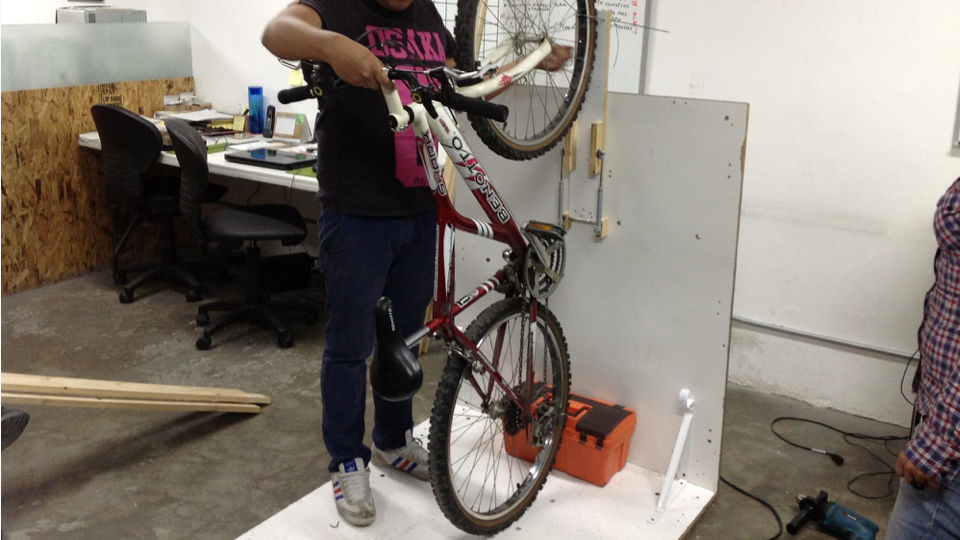I’d like to talk about inclusive urban furniture design for cycling infrastructure, and the way in which we can use design to encourage bicycle use in cities by basing our thinking on the needs and problems facing cyclists and their environment.

Twelve years ago, we started Neko as an Industrial Design and Architecture studio. We were four partners from different backgrounds; Alice, Karime, Hiroshi and myself, with important cultural differences but the same dreams and values; we wanted to create an environmentally and socially responsible company where it would be a pleasure to work.
The company has changed over the years but design is still at the heart of everything we do. More recently we have specialized in urban furniture design for cycling infrastructure, as we believe it is vital to promote the bicycle as a means of transport in cities.
Over time we have included and developed very effective work methodologies, based on creating user-centred solutions; the most important part is defining an objective clearly and without limitations. For example, “Thinking about the basic concept we understand that it isn’t just a ‘Bike park’, rather an ‘easy to use, comfortable and secure place to leave your bike’”. We design thinking about the user and their surroundings, without forgetting the environmental factor.
Four years ago, we developed a bike rack for Mexico City’s Ministry of the Environment, to be used in a large Bike Park with considerable space restrictions. One of the best ways to save space and adapt to the building was to hang bikes vertically, thus reducing the space used by up to 45%. The problem is that hanging bikes requires considerable effort and skill by the user, due to the differences in physical capabilities and types of bike.

This is an example of another model the government had previously considered, but it reduced space by only 25% and was not very easy to use.
We decided to design a vertical rack, but we centred the design on the user and ease of use. During the development phase, we interviewed a lot of cyclists, investigated materials, built several prototypes and models to observe operation, and carried out many, many tests.

Finally, we developed a design with pneumatic assistance to lift the bicycle to a vertical position; it can be used with virtually all types of bike, including those with accessories, without damaging them, and it can be used by people of all ages and physical capabilities. This model is currently installed in two Massive Bike Parks in Mexico City, each with space for 400 bicycles and serving over 4000 people per month. The building offers a secure space and any user can leave their bike easily – this is a great example of how comprehensive design can encourage people to cycle.

In 2015, we designed a bike rack which would generate awareness about the efficient use of public space (12 bicycles = 1 car). It is shaped like a car, and, although the concept is not new, we liked the message and designed a version with its own personality, as well as adding new functions such as an area for text or graphics which also protects the users and their bicycles.

Last year we began developing a two-tier bicycle rack. During our research, we discovered that there were no existing products which were space-saving as well as easy to use, so we designed a rack in which the bike is wheeled onto a ramp - no lifting required - and a pneumatically assisted folding system raises the bike to the upper level. The design is patent pending; our research showed that the design is unique and with clear user-friendly and innovative advantages over existing models.

This design won a European Product Design Award (Bronze) in the Design for Social Impact category (2017), and is soon to be unveiled in a Mid-size Bike Park in Mexico City, also designed by Neko. This building has controlled access with statistics generator, a sensor showing occupied racks and 80 secure bicycle parking spaces in an area of 90m2.

Our focus on user-centred design has taken us to many places around the world, and we know that by focusing on solving the problems of real users, we can continue to innovate, as well as encourage bicycle use.
At Neko we believe that if governments and organisations include and invest in designs that address a specific need and focus on their citizens, they will be better able to respond to the infrastructure and service challenges required by cities today, especially in terms of alternative mobility.
English translation by Alice Pegman
